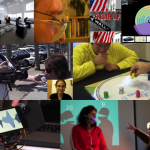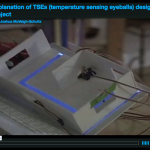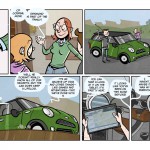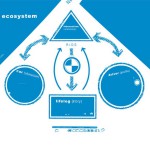My dissertation project explores the intersections between ritual and the design of interactive technologies. Drawing on social science and historical examples, I examine how new interaction rituals get invented “in the wild” and develop design methods that draw inspiration from these examples. I have examined this topic through both qualitative social science and design research lenses, and… Read more »
August 26, 2013Posts By: Joshua McVeigh-Schultz

I updated my portfolio as part of the preparation for advancing to candidacy in USC’s iMAP program. As a hybrid theory/practice program we not only write on three exam areas, but also are expected to present a portfolio of work to our committee. I included a fairly wide variety of projects — some of them dating… Read more »
February 13, 2012The following portfolio represents a range of work and methodologies, including: physical computing, mobile design, experience prototyping, design research, performance, and experimental video.
February 9, 2012
As a collaborator on Jen Stein’s dissertation project PUCK, I worked with Jeff Watson on datavisaulizations of the SCA building’s 100s of sensor feeds. [Project lead: Jen Stein; Dissertation Chair: Prof. Scott Fisher; MEML team: Jacob Boyle, Joshua McVeigh-Schultz, Hyung Oh, Amanda Tasse, Jeff Watson; Storyboard illustrations: Bryant Paul Johnson]
February 8, 2012
CLEAN UP WALL STREET is a game-event inspired by the global financial crisis. The game explores the actions that led financial institutions to endanger the health of the global economy. Playfully assuming the roles of commodity traders and credit rating agents in the actual spaces of Wall Street in Lower Manhattan, players compete to trade… Read more »

(2010) Collaboration with Michael Annetta. This design uses XML data from NAVTEQ to translate daily traffic flow at particular road sections into a rhythmic pulses that maps onto PWM voltage for vibrating motors. By the year 2060, all the humans who survived peak-oil live in giant honeycomb-like structures that contain self-sustaining mini-ecologies within each geodesic… Read more »

This design emerged from thinking about how social surveillance operates to regulate recycling practice in Japan. I wanted to come up with a design that leveraged this kind of imagination about the gaze of others — but instead of being surveilled by one’s cohabitants, one would be surveilled by tiny eyes that run along the floor. These eyes would be “cute” much the way that public service posters in Japan leverage the cuteness of mascots to encourage you to remember important instructions. Instead of focusing on recycling practice, though, I wanted these eyes to be regulating hot or cold air leakage (by guiding an inhabitant to close an open window for example).

Designed as a critique of status monitoring in online contexts, this project presents a prototype of a prosthetic device that conversation partners wear in their mouths to provide visual and auditory feedback about the speaker’s level of online popularity (measured in retweets). The speaker with more current retweets experiences voice amplification (and their mouth glows… Read more »

This project extended our work with automotive lifelogging by using in-car sensors to engage drivers in ongoing discoveries about their vehicle, driving environment, and social context throughout the lifecycle of their car. A goal of the design was to extend the contexts of automotive user-interface design by (1) looking inward to the imagined “character” of… Read more »

‘Ambient storytelling’ — part of the design philosophy of USC’s Mobile and Environmental Media Lab — represents a departure from customization algorithms familiar to discussions of pervasive computing. Rather than thinking about how a car can play the role of glorified butler, anticipating its driver’s every need, instead we reposition the car as co-participant in an… Read more »